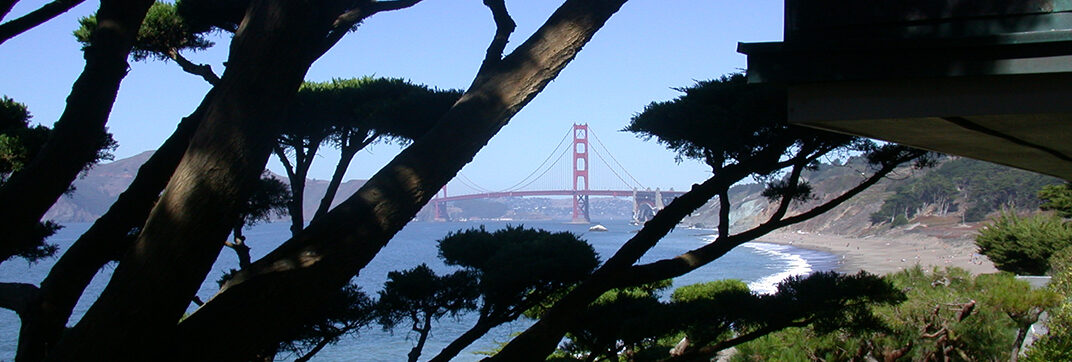Servicing the San Francisco Bay Area
Dmitri Tioupine, ISA certified arborist, and his team specialize in harmonizing trees with the surrounding space, restoring light to living spaces and gardens, and creating or restoring views. Many problems manifesting later in a tree’s life can be traced back to the time of planting. Our goal is to help you choose a tree that is appropriate for the planting site and your personal or professional environment. Together we will work with you to create a healthy space for your trees.
Trees in Urban Environments
Trees provide many benefits for homes and gardens, as well as contributing to property values. As they grow, trees need to be maintained to manage their health, scale and shape to suit the location and available space. Regular maintenance includes pruning using methods such as crown reduction, or canopy raising to create clearance for pedestrians and autos, structural pruning, and crown cleaning (removal of deadwood). Tree shaping can also be carried out for aesthetic reasons, to enhance the appearance of the tree or to achieve a certain look, such as pollarding or cloud pruning (bonsai appearance). Trees should also be regularly inspected for health and safety, to identify and address possible hazards such as weak limb attachments, cracks that may affect structural integrity, and infection.
Our Philosophy to Tree Care
Proper Tree Selection & Planting Methods
We respond to many requests for tree evaluations when clients notice problems with their trees. Once we arrive, often the present problem could have been averted by proper tree selection and planting methods. Proper tree selection means taking the climate, soil conditions, future tree size, and the root spread into account for the location. For example, a 12-inch Sequoia seedling would not be an appropriate choice for a townhouse’s small backyard, since it will soon outgrow the space available. Nor would one select a delicate Japanese Maple for a site on a desert ranch. Proper planting, methods include preparation of the planting site and employing correct planting practices. Trees incorrectly planted may develop root problems.
Watch For Structural Weakness or Abnormal Growth
Other problems that trees develop happen over time and should be addressed as early as possible in the tree’s development. An example of this type of condition would be included bark, which often happens in the case of multi-trunked trees, but can also be observed at lateral branch attachments. Sites of included bark are structural weaknesses that should be corrected during the early development of the tree, but can also be addressed later in the trees life if necessary.
Many of the trees we evaluate are in fine condition, needing only crown cleaning which includes the removal of dead wood and branches (deadwooding). Other trees would benefit from crown reduction or structural pruning. In certain cases, due to poor tree management practices (e.g. topping), or after severe weather conditions, the crown has been damaged. It may require a few seasons of crown restoration to return the tree to a more natural appearance. Sometimes it’s necessary to remove or replace a tree, such as if the trunk has decayed to the point of structural failure. These are issues that we can advise you on.
Use the Contact Us form to inquire about tree care services or an arborist consultation, or call us at: 415-596-5999. phone
Pruning
Decisions to prune should be based upon the needs of the tree with regard to its particular location, and the physical structure of the tree. Pruning should be carried out for a particular purpose. Common reasons for pruning include:
- Remove dead branches
- Eliminate hazards
- Remove crossing limbs that may create future structural problems
- Restore the natural shape of the canopy (that may have been improperly pruned in the past)
- Improve the aesthetic appearance of the tree
- Reduce or maintain the size of the tree canopy
- Restore light to gardens, walkways and living spaces
- Restore scenic views for properties that have them
- Prevent encroachment into neighbor’s properties
- Comply with City Ordinances pertaining to pedestrian and auto clearance
Pruning Techniques
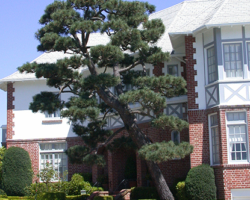
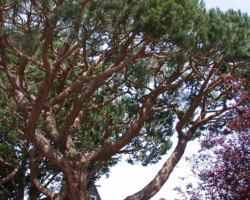
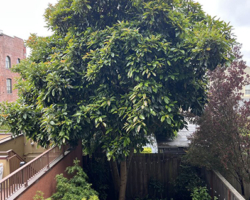
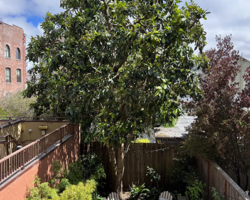
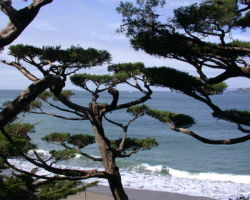
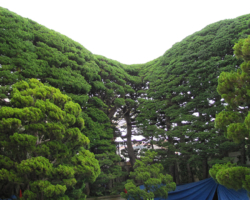
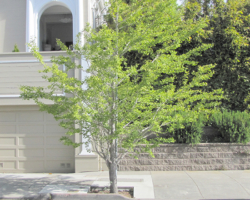
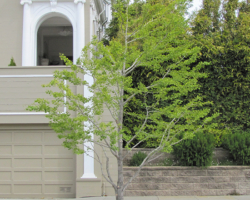
Use the Contact Us form to inquire about tree care services or an arborist consultation, or call us at: 415-596-5999. phone
Why “Topping” hurts trees
Topping is the indiscriminate cutting of tree branches to stubs or to lateral branches that are not large enough to assume the terminal role. Topping is often used to reduce the size of a tree, but it is perhaps the most harmful tree pruning practice known.
Topping can lead to unacceptable risk, tree stress, and decay. It is also expensive and destroys the natural form of the tree.
Alternatives to topping include removing small branches to their point of origin, or pruning back larger limbs to a lateral branch that is large enough to assume the terminal role. Sometimes the best solution is removing the tree and replacing it with a species that is more appropriate for the site.
The information above was excerpted from Trees Are Good. Learn more about Why Topping Hurts Trees (pdf).
Consultations
Dmitri provides arborist consultations on a wide spectrum of issues relating to trees, including health and hazard assessment, and short- and long-term tree management plans. He routinely consults for clients prior to residential or commercial construction and remodeling projects, and recommendations for minimization of damage to trees during construction. Tree consultations can be formal or informal, verbal or written reports, depending on the needs of the client.
Use the Contact Us form to inquire about tree care services or an arborist consultation, or call us at: 415-596-5999. phone
Photos courtesy of Phil Danielson (except Crown Reduction & Cleaning, Crown Raising, and Pollarding)
